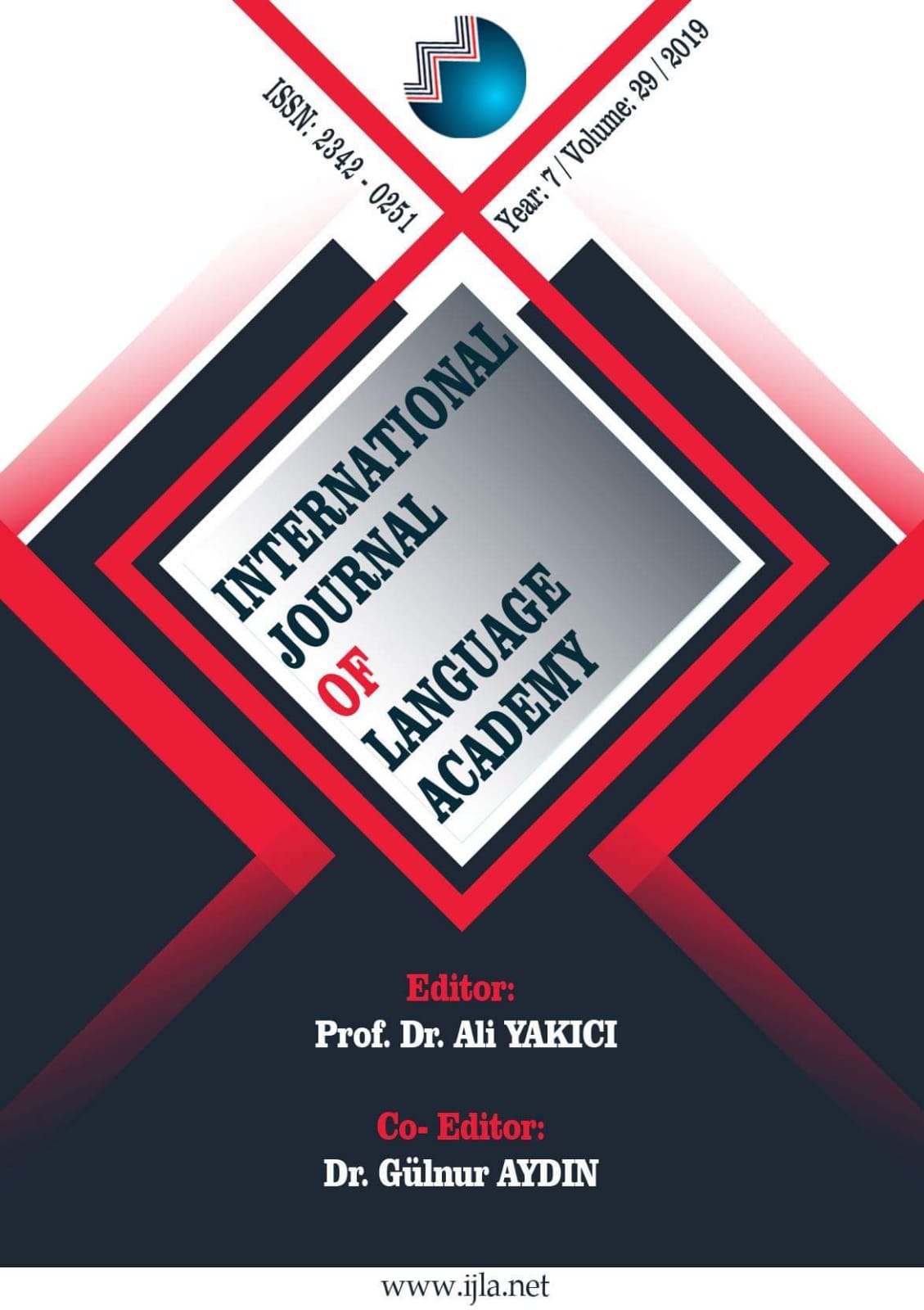Author :
Abstract
The moral indications of folk tales are interpreted mythologically due to the natural phenomena or to the traditional tales of nations. Slavic folklore enriched that set of interpretations by some memorable figures whose characteristics, deeds, and shapes were transferred to sequential generations to mark the distinction and singularity among other nations. Baba Yaga of Russian folklore and Golem of Czech are folk tale figures ostensibly appeared as unforgettable symbols of natural phenomena but they are looked at as main characters of everyday people living. Simultaneously, the modern Czech drama after Czechoslovakia ceased to exist (1938) and occupied by Nazi Germany (1939-45), still distinguished by its fruitful staging of the classics. Slavic drama, especially of Prague, is inspired by the classic tales of operatic scenario. The Devil and Kate is one of the typical fairy tale opera combines the tradition and modern Czech fairy-tale motifs. The paper goes to discuss the dramatic and narrative fairy-tale motifs mainly in two parts. The first part tackles two of these folk tale figures from Russian and Czechs folklore. It is parted into two sub-parts, the first part examines the operatic drama of Prague theatre that explores the classic staging of fairy tale The Devil and Kate and Rusalka The second points to the Baba Yaga as interpreted differently in the Russian society. It also discusses the Golem of Prague and how mythologists considered that figure as the symbol of eternal man's own creation to disobey its creator finally. The paper concludes the fruitful findings in the third paper part.
Keywords
Abstract
The moral indications of folk tales are interpreted mythologically due to the natural phenomena or to the traditional tales of nations. Slavic folklore enriched that set of interpretations by some memorable figures whose characteristics, deeds, and shapes were transferred to sequential generations to mark the distinction and singularity among other nations. Baba Yaga of Russian folklore and Golem of Czech are folk tale figures ostensibly appeared as unforgettable symbols of natural phenomena but they are looked at as main characters of everyday people living. Simultaneously, the modern Czech drama after Czechoslovakia ceased to exist (1938) and occupied by Nazi Germany (1939-45), still distinguished by its fruitful staging of the classics. Slavic drama, especially of Prague, is inspired by the classic tales of operatic scenario. The Devil and Kate is one of the typical fairy tale opera combines the tradition and modern Czech fairy-tale motifs. The paper goes to discuss the dramatic and narrative fairy-tale motifs mainly in two parts. The first part tackles two of these folk tale figures from Russian and Czechs folklore. It is parted into two sub-parts, the first part examines the operatic drama of Prague theatre that explores the classic staging of fairy tale The Devil and Kate and Rusalka The second points to the Baba Yaga as interpreted differently in the Russian society. It also discusses the Golem of Prague and how mythologists considered that figure as the symbol of eternal man's own creation to disobey its creator finally. The paper concludes the fruitful findings in the third paper part.
Keywords
- Baer, Elizabeth R. (2012). The Golem Redux from Prague to Post-Holocaust Fiction. Detroit: Wayne State University Press.
- Beckerman, Michael. (1993). The Master's Little Joke: Antonin Dvorak and the Mask of Nation. In Dvorak and His Work, ed. By Michael Beckerman. New Jersey: Princeton University Press, pp: 104-134.
- Briggs, A.D. Alexander Pushkin.(1983)A Critical Study. Great Britain: Kent, Beckenham, Biddles Ltd., Guildford and King's Lynn,.
- Fisher, Burton D. 2013. ()Opera Journeys' Guide: Opera at Movie Theatres (Season 2013- 2014).Boca Raton Fl/: Opera Journeys Publication.
- Franz, Marie_Louis Von.( 1993) The Feminine in Fairy Archetypal Tales. The University of California.
- Encyclopedia Britannica (2012): Celebrate the Stories that Have Moved the World for Centuries. Legends, Myths, and Folktales. U.S.A: Encyclopedia Britannica, INC.
- Ivanitskaia, E.N.(1984) Folk Belief. New York and London: M.E. Sharpe.
- John, Andreas.(2014). Baba Yaga: The Ambiguous Mother and Witch of the Russian Folktale.New York: Peter Lang Publishing, Inc.
- Klinkenborg, Meghan. (2018). Rusalka: Opera at its Most Operatic.
- - Oinas, Felix J. 1981. "Lying in Passages". Canadian_American Slavic Studies, 15:5-23.
- Šíp, Ladislav (2005). "Beloved National Opera by Dvořák". Rusalka (Prague National Theatre Orchestra, conductor: Jaroslav Krombholc) (CD). Kohoutová, Joy (trans.). Prague: Supraphon. pp. 8–15
- Thomas, Alfred.(2010). Prague Palimpsest: Writing Memory, and the City. Chicago and London:The University of Chicago Press.
- Tyrrell, John(1988). Czech Opera. Cambridge: Cambridge University Press.
- Wagnerova,(2007). Magdalena Old Prague Legends.





